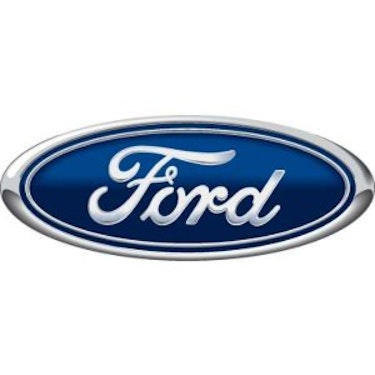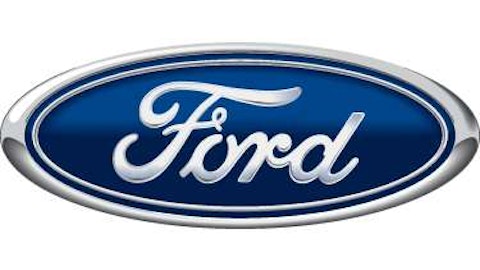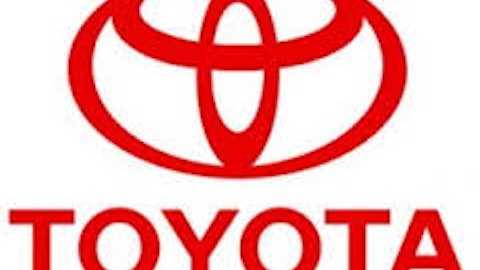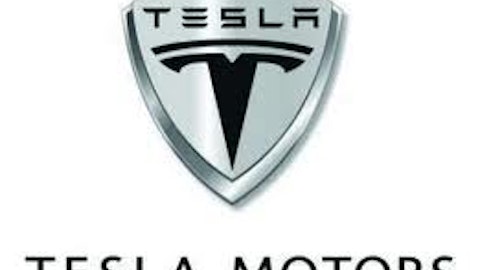
General Motors Company (NYSE:GM) utilized nearly $50 billion in loans from the federal government to continue operating while undergoing a bankruptcy reorganization and has paid the U.S. government back in full with a mixture of cash and General Motors Company (NYSE:GM) stock. Ford Motor Company (NYSE:F), on the other hand, managed to avoid borrowing from the government altogether and has flourished under the innovative leadership of CEO Alan Mulally. Even Chrysler has demonstrated a resurgence in auto sales that few expected.
Gains for General Motors Company (NYSE:GM) and Ford Motor Company (NYSE:F) have continued to be strong across the board in 2013. GM’s total unit sales are up 8.3% year to date led by a recent redesign of its Silverado and Sierra truck lines. For Ford Motor Company (NYSE:F), which has shown an even more impressive 13% year-to-date gain in total vehicle sales, it’s been a blend of ongoing success for its F-Series trucks and its compact vehicle line.
Detroit’s biggest missed opportunity
But for everything that’s going right with Detroit automakers, they’re still striking out in one department: attracting female buyers.
According to the most recent figures, 39% of all car buyers nowadays are women. We also know this figure is notoriously understated with women outnumbering men in driver’s licenses issued for the first time in history last year. The discrepancy between these two numbers derives from instances where a married couple makes a decision to buy a car that often goes in the husband’s name even if the female is the primary driver.
You might be thinking, “OK, so what? Men are still on the registration tab of 61% of all vehicles registered!” So what is that more than 80% of all car-buying decisions are handled by women, and they frankly don’t have the same ideas for what they want in a car as a man does. Ford and General Motors Company (NYSE:GM), for instance, have definitely struck a chord with many men by placing an emphasis on horsepower. By paying homage to the muscle car days with the Mustang and Camaro, both companies have reinvigorated sales. Most women, though, could care less about how quickly their car goes from zero to 60 or if it has 500 horsepower.
What women want
Instead, women approach car buying from a more practical viewpoint. Interior space, gas mileage, overall value relative to price, safety, and reliability rank much higher up their scale of important features than they do with male buyers. This means that if GM and Ford Motor Company (NYSE:F) want more female buyers to open up their individual and family pocketbooks, they need to pay attention to what Honda Motor Co Ltd (ADR) (NYSE:HMC) and other foreign carmakers are doing right.
In midsized cars, the Honda Accord took top honors from Consumer Reports in 2013. Women pay considerably more attention to these reports than do men, which allowed Accord to surpass Toyota Motor Corporation (ADR) (NYSE:TM)‘ Camry in sales in April. That isn’t a small feat, either, as Camry has been the top-selling U.S. car for the past 11 years. Point No. 1: Car reviews and public opinion matter to the female buyer!
Foreign automakers also give women extra piece of mind with regard to their warranty period. Kia and Hyundai both offer 10-year/100,000 mile powertrain warranties on their vehicles. In comparison, General Motors Company (NYSE:GM) also offers a 100,000 mile powertrain warranty, but is only good for a period of five years. Ford Motor Company (NYSE:F)’s powertrain warranty is also five years but covers just the first 60,000 miles. Point No. 2: Warranties translate to security for female buyers!

Source: Emilio Labrador, Flickr.
Perhaps the biggest factor that’s propelled foreign automakers ahead of Detroit’s dynamic duo is the overall value that foreign autos offer. Gas mileage is one factor that goes into a female buyers’ purchase decision, and in 2012, foreign companies selling cars in the U.S. didn’t disappoint. The annual corporate average fuel economy, or CAFE, index which measures fuel efficiency across a brands’ entire line of vehicles and is compiled by the U.S. government revealed that Honda Motor Co Ltd (ADR) (NYSE:HMC), Toyota Motor Corporation (ADR) (NYSE:TM), and Nissan all came in well ahead of Ford and GM. Point No. 3: Female buyers want good value for their money.
Is Detroit taking the right steps?
Don’t get me wrong, Ford Motor Company (NYSE:F) and GM aren’t twiddling their thumbs when it comes to female buyers, but they aren’t doing nearly enough to target this potentially multibillion-dollar audience.
Domestically Ford has had success with the reintroduction of the subcompact Fiesta while GM’s Chevy line has reengineered its Malibu to target a growing population of female buyers. Still, much is left to be done domestically and globally to target female car buyers.
I feel advertising is one area where Detroit has to resonate with female buyers. Focusing on practicality and fuel efficiency and less on power would be one way Ford Motor Company (NYSE:F) and General Motors Company (NYSE:GM) can better connect with prospective buyers.
Another key point — and this rings especially true for Ford which is growing like a weed in China — is that the middle class in emerging market regions like Southeast Asia, Eastern Europe, and in parts of South America are still rapidly growing, even if Western Europe and the U.S. have mostly stalled. Although men are the predominant buyers in these countries, we’re also seeing more women than ever rise into the middle class. It’s just a matter of time before these women become core customers such as they’ve become in the U.S. marketplace.
Finally, Detroit automakers need to regain the trust of the female buyer. American cars are often viewed as less reliable than foreign cars. It maybe that General Motors Company (NYSE:GM)’s recent bankruptcy still looms in buyers’ minds, or the fact that U.S. auto warranties aren’t up to par, but female buyers are skeptical of purchasing American-made automobiles. Whether it’s by beefing up their warranties or beating foreign car companies on a combination of price and fuel efficiency, Ford and GM are going to need to step up their game even more than they already have if they really hope to drive over the competition.
The article This Is Ford and GM’s Biggest Missed Opportunity originally appeared on Fool.com and is written by Sean Williams.
Fool contributor Sean Williams has no material interest in any companies mentioned in this article. You can follow him on CAPS under the screen name TMFUltraLong, track every pick he makes under the screen name TrackUltraLong, and check him out on Twitter, where he goes by the handle @TMFUltraLong.The Motley Fool owns shares of, and recommends, Ford. It also recommends General Motors.
Copyright © 1995 – 2013 The Motley Fool, LLC. All rights reserved. The Motley Fool has a disclosure policy.




